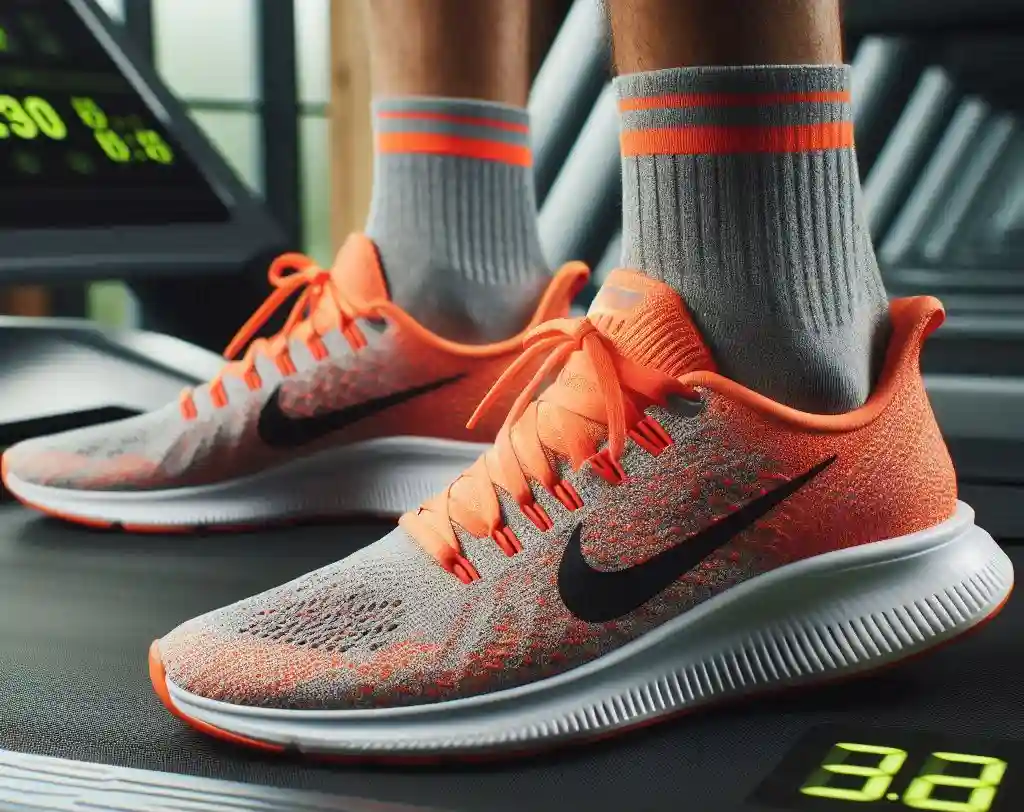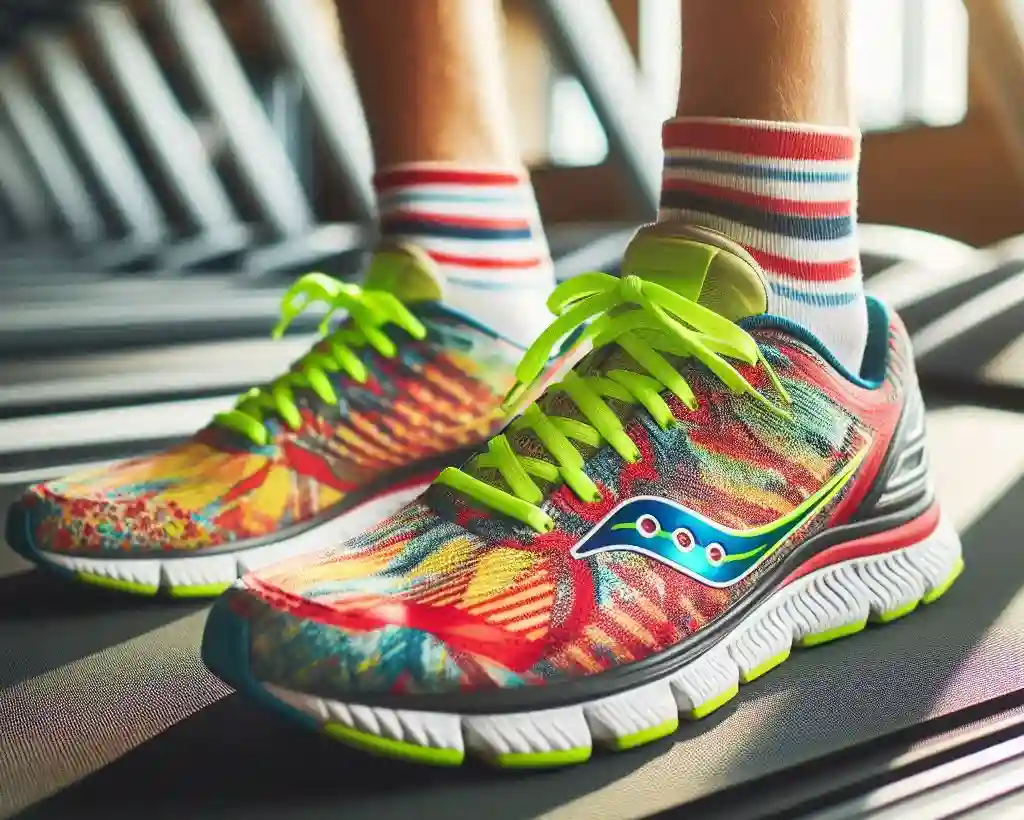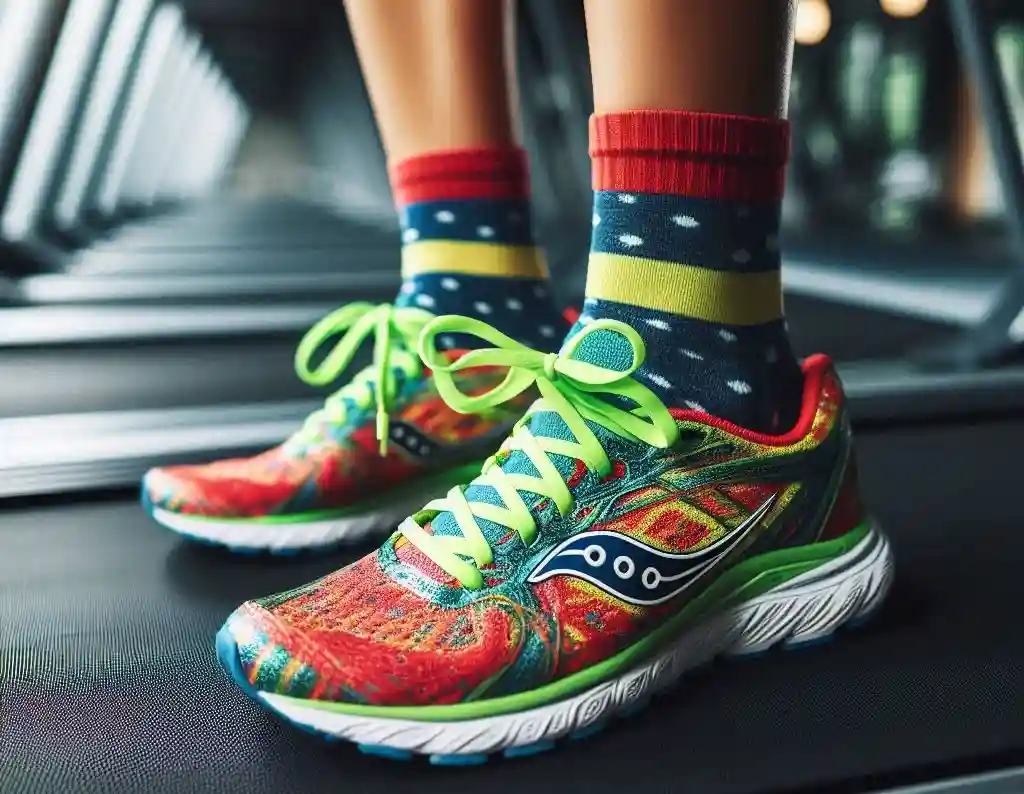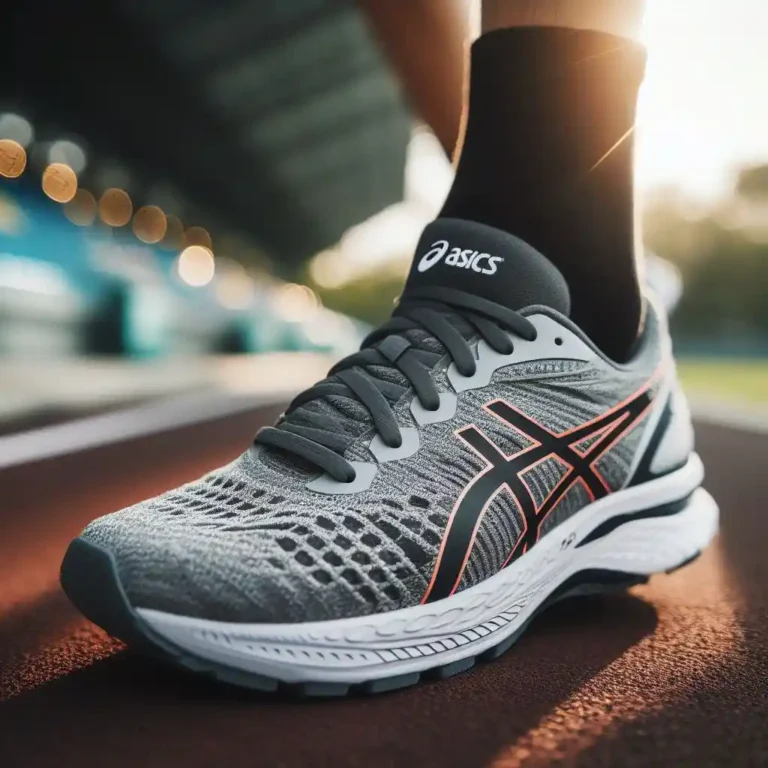Saucony vs Nike: A Head-to-Head Comparison
Saucony vs Nike: When it comes to choosing the perfect running shoes, two brands often stand out from the rest: Saucony and Nike.
Both have earned a reputation for delivering high-quality, performance-driven footwear that can make all the difference in a runner’s performance.
But with so many similarities between the two, it can be tough to decide which one is right for you.
Saucony vs Nike: A Quick Overview

Saucony
- Known for their high-quality, high-performance running shoes
- Focus on comfort, support, and stability for runners of all levels
- Popular models include the Freedom ISO, Guide, and Triumph
- Generally more expensive than Nike, with prices ranging from
80 to160 - Offers a more personalized fit with their EVERUN topsole and PWRTRAC technology
- Often preferred by runners with high arches or plantar fasciitis
Nike
- One of the most recognized and popular sportswear brands in the world
- Offers a wide range of running shoes, from casual to high-performance models
- Popular models include the Vaporfly, Pegasus, and Air Zoom
- Generally more affordable than Saucony, with prices ranging from
60 to150 - Known for their stylish designs and trendy colorways
- Often preferred by runners who prioritize style and fashion
Key differences
- Saucony focuses on comfort and support, while Nike prioritizes style and fashion
- Saucony tends to be more expensive than Nike
- Saucony is often preferred by runners with specific foot needs (e.g. high arches), while Nike is popular among runners who prioritize style and fashion
Cushioning and Comfort: Which Brand Offers Better Comfort?

Cushioning
- Saucony:
- Features EVERUN topsole for added cushioning and comfort
- PWRTRAC technology provides a smooth heel-to-toe transition
- Midsoles made with PWRFOAM for responsive cushioning
- Offers a more substantial and plush ride
- Nike:
- Features Zoom Air units for responsive cushioning
- React foam provides a soft and springy feel
- Some models feature a full-length carbon plate for added snap and responsiveness
- Offers a more responsive and snappy ride
Comfort
- Saucony:
- Known for their comfortable and supportive ride
- Features a more substantial and cushioned midsole
- Upper materials are often more breathable and comfortable
- Offers a more relaxed and comfortable fit
- Nike:
- Offers a more snug and secure fit
- Upper materials are often more lightweight and flexible
- Features a more minimalist approach to cushioning
- Can be less comfortable for runners with high arches or plantar fasciitis
Key differences
- Saucony prioritizes comfort and cushioning, while Nike focuses on responsiveness and snap
- Saucony’s cushioning is often more substantial and plush, while Nike’s is more responsive and snappy
- Saucony is often preferred by runners who prioritize comfort, while Nike is preferred by runners who prioritize performance and speed
Support and Stability: Which Shoe Reigns Supreme?

Support
- Saucony:
- Offers a range of support levels, from neutral to maximum support
- Features a more substantial and supportive midsole
- GuideRails technology provides additional support and stability
- Suitable for runners with high arches, plantar fasciitis, or other foot issues
- Nike:
- Offers a range of support levels, from neutral to moderate support
- Features a more minimalist approach to support
- Some models feature a heel clip for added support
- Suitable for runners with neutral foot pronation or mild overpronation
Stability
- Saucony:
- Features a more substantial and stable midsole
- PWRTRAC technology provides a smooth heel-to-toe transition
- EVERUN topsole adds additional stability and support
- Suitable for runners who need additional stability and support
- Nike:
- Features a more responsive and flexible midsole
- React foam provides a soft and springy feel
- Some models feature a full-length carbon plate for added stability
- Suitable for runners who prioritize responsiveness and speed
Key differences
- Saucony prioritizes support and stability, while Nike focuses on responsiveness and speed
- Saucony’s support is often more substantial and supportive, while Nike’s is more minimalist
- Saucony is often preferred by runners who need additional support and stability, while Nike is preferred by runners who prioritize performance and speed
Traction and Grip: Which Shoe Stack Up for Hiking?

Traction
- Saucony:
- Features a more aggressive tread pattern for improved traction
- PWRTRAC technology provides a smooth heel-to-toe transition and improved traction
- Outsole materials are often more durable and grippy
- Suitable for runners who need traction on various terrain, including trails and wet roads
- Nike:
- Features a more minimalist tread pattern for improved flexibility
- Outsole materials are often more lightweight and flexible
- Some models feature a unique tread pattern for improved traction on specific surfaces (e.g. trails or tracks)
- Suitable for runners who prioritize speed and agility on smooth surfaces
Grip
- Saucony:
- Features a more substantial and grippy outsole for improved grip on various surfaces
- EVERUN topsole adds additional grip and traction
- Suitable for runners who need grip on wet, slippery, or uneven surfaces
- Nike:
- Features a more responsive and flexible outsole for improved grip on smooth surfaces
- React foam provides a soft and springy feel, but may compromise grip on slippery surfaces
- Suitable for runners who prioritize speed and agility on smooth surfaces
Key differences
- Saucony prioritizes traction and grip, while Nike focuses on flexibility and responsiveness
- Saucony’s traction is often more aggressive and grippy, while Nike’s is more minimalist and flexible
- Saucony is often preferred by runners who need traction and grip on various terrain, while Nike is preferred by runners who prioritize speed and agility on smooth surfaces
Weight and Responsiveness: The Verdict Both The Shoes

Weight
- Saucony:
- Generally heavier than Nike shoes, with an average weight of 10-12 oz (280-340g)
- More substantial and supportive midsole contributes to the weight
- Suitable for runners who prioritize comfort and support over lightweight performance
- Nike:
- Generally lighter than Saucony shoes, with an average weight of 8-10 oz (230-280g)
- More minimalist approach to design and materials reduces weight
- Suitable for runners who prioritize speed and agility over comfort and support
Responsiveness
- Saucony:
- Features a more substantial and supportive midsole, which can reduce responsiveness
- PWRTRAC technology provides a smooth heel-to-toe transition, but may not be as responsive as Nike’s React foam
- Suitable for runners who prioritize comfort and support over responsiveness
- Nike:
- Features a more responsive and springy midsole, thanks to React foam
- Provides a more energetic and snappy feel with each step
- Suitable for runners who prioritize speed and agility over comfort and support
Key differences
- Saucony prioritizes comfort and support, while Nike focuses on lightweight performance and responsiveness
- Saucony shoes are generally heavier and less responsive, while Nike shoes are lighter and more responsive
- Saucony is often preferred by runners who need comfort and support, while Nike is preferred by runners who prioritize speed and agility
Breathability and Ventilation: Keeping Your Feet Cool and Dry
Breathability
- Saucony:
- Features breathable mesh upper materials for improved airflow
- Engineered mesh provides strategic ventilation and support
- Some models feature a more open mesh pattern for increased breathability
- Suitable for runners who prioritize comfort and breathability
- Nike:
- Features lightweight and breathable upper materials, such as Flyknit or mesh
- Strategic ventilation zones provide airflow and cooling
- Some models feature a more minimalist approach to upper design, reducing weight and increasing breathability
- Suitable for runners who prioritize speed and agility
Ventilation
- Saucony:
- Features ventilation zones in the toe box and midfoot for improved airflow
- Some models feature a more substantial and supportive midsole, which can reduce ventilation
- Suitable for runners who prioritize comfort and support over ventilation
- Nike:
- Features extensive ventilation zones throughout the upper, including the toe box, midfoot, and heel
- React foam midsole provides a more breathable and lightweight design
- Suitable for runners who prioritize speed and agility, and need maximum ventilation
Key differences
- Saucony prioritizes comfort and support, while Nike focuses on lightweight performance and ventilation
- Saucony shoes may have reduced ventilation due to their more substantial midsole, while Nike shoes prioritize airflow and cooling
- Saucony is often preferred by runners who need comfort and support, while Nike is preferred by runners who prioritize speed and agility
Durability and Longevity: Which Shoe Will Last Longer?
Durability
- Saucony:
- Features a more substantial and supportive midsole, which can increase durability
- PWRTRAC technology provides a smooth heel-to-toe transition, reducing wear and tear
- Upper materials are often more durable and resistant to wear
- Suitable for runners who prioritize durability and longevity
- Nike:
- Features a more minimalist approach to design and materials, which can reduce durability
- React foam midsole is lightweight and responsive, but may be more prone to wear and tear
- Upper materials are often more lightweight and flexible, but may not be as durable
- Suitable for runners who prioritize speed and agility over durability
Longevity
- Saucony:
- Shoes often last longer due to their more substantial and supportive design
- Can withstand high mileage and frequent use
- Suitable for runners who log high mileage or need a shoe that can keep up with their training
- Nike:
- Shoes may have a shorter lifespan due to their more minimalist design
- May require more frequent replacement, especially for high-mileage runners
- Suitable for runners who prioritize speed and agility, and are willing to replace their shoes more frequently
Key differences
- Saucony prioritizes durability and longevity, while Nike focuses on lightweight performance and speed
- Saucony shoes are often more durable and long-lasting, while Nike shoes may require more frequent replacement
- Saucony is often preferred by runners who prioritize durability and longevity, while Nike is preferred by runners who prioritize speed and agility
Style and Aesthetics: Which Shoe Looks and Feels Better?
Style
- Saucony:
- Offers a more traditional and conservative design approach
- Shoes often feature a more substantial and supportive design
- Color schemes are often more muted and subtle
- Suitable for runners who prioritize comfort and support over fashion
- Nike:
- Offers a more modern and trendy design approach
- Shoes often feature a more minimalist and sleek design
- Color schemes are often more bold and vibrant
- Suitable for runners who prioritize fashion and style
Aesthetics
- Saucony:
- Shoes often feature a more substantial and supportive upper design
- Materials are often more durable and resistant to wear
- Suitable for runners who prioritize comfort and support over aesthetics
- Nike:
- Shoes often feature a more minimalist and lightweight upper design
- Materials are often more flexible and breathable
- Suitable for runners who prioritize fashion and style over comfort and support
Key differences
- Saucony prioritizes comfort and support, while Nike focuses on fashion and style
- Saucony shoes are often more traditional and conservative, while Nike shoes are often more modern and trendy
- Saucony is often preferred by runners who prioritize comfort and support, while Nike is preferred by runners who prioritize fashion and style
The Final Step: Which Shoe Reigns Supreme in Our Head-to-Head Comparison?
Saucony
- Strengths:
- Offers superior comfort and support
- Features a more substantial and supportive midsole
- Suitable for runners with high arches or plantar fasciitis
- Prioritizes durability and longevity
- Weaknesses:
- May be heavier and less responsive than Nike shoes
- Less fashionable and trendy designs
- May not be suitable for runners who prioritize speed and agility
Nike
- Strengths:
- Offers superior speed and agility
- Features a more minimalist and lightweight design
- Suitable for runners who prioritize fashion and style
- Prioritizes responsiveness and snappiness
- Weaknesses:
- May not offer enough support and comfort for runners with high arches or plantar fasciitis
- May not be as durable or long-lasting as Saucony shoes
- May not be suitable for runners who prioritize comfort and support
The Verdict
- Saucony is the better choice for runners who prioritize comfort and support, and are willing to sacrifice some speed and agility.
- Nike is the better choice for runners who prioritize speed and agility, and are willing to sacrifice some comfort and support.
FAQs
Q: Which brand is better for runners with high arches or plantar fasciitis?
A: Saucony is generally better for runners with high arches or plantar fasciitis due to their more supportive and comfortable designs.
Q: Which brand is better for runners who prioritize speed and agility?
A: Nike is generally better for runners who prioritize speed and agility due to their more minimalist and lightweight designs.
Q: Which brand is more durable and long-lasting?
A: Saucony is generally more durable and long-lasting due to their more substantial and supportive designs.
Q: Which brand is more fashionable and trendy?
A: Nike is generally more fashionable and trendy due to their more modern and sleek designs.
Q: Can I wear Saucony shoes for casual, everyday activities?
A: Yes, Saucony shoes can be worn for casual, everyday activities due to their comfortable and supportive designs.
Q: Can I wear Nike shoes for long-distance running or marathons?
A: Yes, Nike shoes can be worn for long-distance running or marathons, but they may not provide enough support and comfort for runners with high arches or plantar fasciitis.
Q: Are Saucony shoes more expensive than Nike shoes?
A: Generally, yes, Saucony shoes tend to be more expensive than Nike shoes due to their more substantial and supportive designs.
Q: Can I customize my Saucony or Nike shoes?
A: Yes, both Saucony and Nike offer customization options for their shoes, including different colors, materials, and designs.

Mia Smith is the founder of Shoe Storyteller, a blog that celebrates the art and stories behind shoes. With a passion for fashion and a flair for storytelling, Mia brings a unique perspective to the world of footwear.




